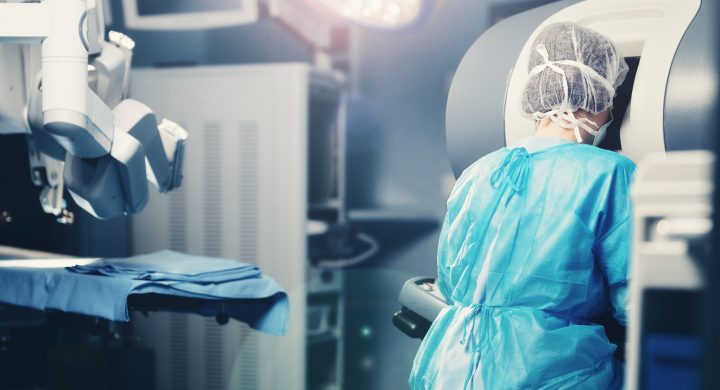
In 1985, medical technology changed forever when a surgical robot, PUMA 560, participated in the first-ever robot-assisted surgery (RAS), a brain biopsy procedure that required extreme precision and accuracy.
It was a paradigm shift for an industry predicated on human expertise.
Today, RAS is no longer an anomaly. They are standard operating procedures in many surgical scenarios. More than 876,000 RAS operations are performed annually, increasing by nearly 11 percent each quarter-year until COVID-19 interrupted healthcare operations and disrupted the data.
The benefits are accretive to healthcare providers and their patients. One study notes, “As surgeons become more comfortable and efficient with increasing case volumes, high-volume RAS demonstrates lower hospital length-of-stay and lower conversion rates, without an increase in total cost, complications, or readmissions.”
In other words, RAS shortens hospital stays while minimizing the chance of a routine procedure becoming more complicated.
RAS also meaningfully impacts Surgical Site Infection (SSI) reduction, helping patients achieve better health outcomes. SSIs in the part of the body where the surgery took place add more than 400,000 extra days in hospitals and increase healthcare costs by $900 million annually, making this a welcome byproduct of technological innovation.
Why RAS Reduces SSIs
RAS has a demonstrated positive impact on SSI reduction, amplifying several factors that help healthcare providers operate more efficiently and effectively.
Reduced Hospital Stay
The longer patients are in the hospital, the more likely they are to become infected with an SSI.
For instance, a 2023 study on the correlation between hospital stay length and SSI frequency found, “An increased SSI risk of 112% was seen in general surgical procedures within 1-2 days of the preoperative length of stay, compared to same-day surgery.”
RAS allows providers to offer less invasive procedures requiring shorter lengths of stay.
An analysis of robotic surgery to perform bladder cancer removal found that patients spent 20 percent less time in hospitals compared to traditional operational methods. It also found that robotic surgery reduced readmission risks by 52 percent, further decreasing the time patients spend in a healthcare environment, collectively making it less likely they will contract an SSI.
Reduce Open Conversion Rates
Minimally invasive procedures help prevent SSIs, making it a go-to approach for viable surgical procedures. The National Library of Medicine reports, “The use of minimally invasive surgery has resulted in a decreased incidence of SSIs; the SSI rate was significantly lower when the procedure was done laparoscopically.”
Additionally, a study published by JAMA says, “Minimally invasive surgery is significantly associated with reduced odds of SSIs. This advantage should be considered when assessing the overall benefits of minimally invasive techniques.”
In turn, RAS is associated with reduced open conversion rates, where postoperative complications require providers to pivot from minimally invasive surgery to open surgery.
In a peer-reviewed analysis of multiple studies, The AMA Journal of Ethics reports that “patients who undergo robotic-assisted surgery have significantly less postoperative pain, reduced open conversion rate, and shorter postoperative length of stay than patients who undergo laparoscopic surgery.”
Simply put, RAS enables more effective minimally invasive surgeries, which reduce the risk of SSIs.
Procure-Specific Improvements
RAS improves several surgical elements, including bleeding volume, which reduces the risk of SSIs.
In one study of radical cystectomies between 2008 and 2022, patients with higher bleeding volume were closely correlated with increased risk of SSIs. RAS reduced bleeding volume, which, as the study concludes, “decreased bleeding volume, which was significantly associated with robot-assisted procedures, was an independent and more significant factor for reducing SSI after radical cystectomy than the differences of the surgical procedure even after propensity score matching.”
A separate study on robotic-assisted knee replacement surgery and infection found that “The surgical site infection rates were found to be low across robotic knee arthroplasty,” while also cautioning that further research is needed to prove the superiority of RAS over conventional, non-robotic techniques.
What Can Healthcare Providers Learn
To be sure, surgical procedures are often unique, and drawing broad, corollary conclusions can be problematic. However, given the multifaceted impact of RAS and SSI reduction, one lesson is clear: technological innovation and SSI reduction go hand-in-hand.
Technological innovation is happening at every point in the surgical process, presenting opportunities for SSI prevention.
Notably, optimal disinfection of surgical settings between procedures can further reduce the risk of patients acquiring an SSI. Automated or fast-acting disinfection technology is making this possible.
Nevoa’s Stratus with Microburst, an ultra-low-volume fogger that gives full coverage with easy application, reduces the risk of infections in just two minutes before every surgical procedure.
Every patient deserves advanced disinfection. Nevoa is your partner in combat, helping you identify and implement the latest technological advances to protect patients from SSIs.
